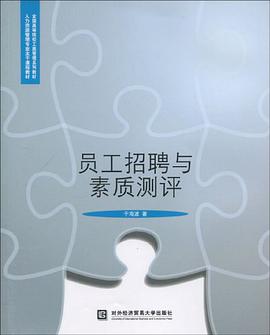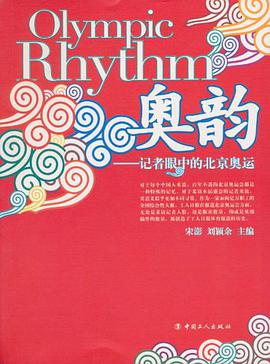
Usage-based models of language are theories that seek to ground language structure in the actual instances of language—the usage-event. Language structure emerges from language use. This means that even the more abstract theoretical notions posited to describe language have a direct link to the actual utterance. With this emphasis for models of language, underlying representations that lack phonetic or lexical content are nonexistent. Furthermore, creativity in the usage-event is accounted for as an ongoing expansion and extension of the already existent structures or units. Language structures result from language use and novel uses shape the future structure of the linguistic system.
This book is divided into nine sections with different writers each developing a focus on language structure that differs in methodology but share this idea of language use and structure. The first section, “A dynamic usage-based model” by Ronald Langacker, seeks to highlight his theory of cognitive grammar with emphasis on the usage-event. Langacker is the first person to introduce the term "usage-based." I find cognitive grammar an appealing theory because a rather economical set of linguistic notions with direct claims to psychological reality describes a very wide range of data from phonemics to discourse.[1]
Like generative (non usage-based) theories of language, usage-based theories of language take the explanation of language acquisition as a serious goal. How is it that a child can acquire the grammaticality and facility of a language in such a short time? Generative theories hypothesize a language-specific faculty within general cognition that accounts for universal structures, i.e., principles and parameters that determine the grammaticality of a given language. In this way, what a speaker actually needs to acquire is minimal and this forms a minimalist program. On the other hand, usage-based theories generally, and Cognitive Grammar specifically, posit that language builds up a conventional inventory of units (including units that convey grammatical patterns) that a speaker can draw on and put together for communication. This inventory of units is based on hearing and using the language and through use become entrenched (see also Langacker 1987). These conventional units become the basis from which a speaker creatively communicates by extension of entrenched concepts and categories. Viewed this way, a massive cognitive structure of concepts and culture will lead to language description that reflects a good amount of actual learning, forming a maximalist program. Language acquisition is then viewed as the entrenching, building and extending of concepts through use. This is why Tomasello says,
In usage based models of language…all things flow from the actual usage events in which people communicate linguistically with one another. The linguistic skills that a person possesses at any given moment in time…result from her accumulated experience with language across the totality of usage events in her life…this theoretical freedom to identify these units on the basis of actual language use, rather than adult-based linguistic theory, is truly liberating. (Tomasello 2000:61–62)
In the development of his theory of grammar Langacker has expressed this "theoretical freedom" that Tomasello speaks about in this way,
Putting together novel expressions is something that speakers do, not grammars. It is a problem-solving activity that demands a constructive effort and occurs when linguistic convention is put to use in specific circumstances. (Langacker 1987:65)
In this first chapter Langacker highlights that grammar is a composition event that takes a communication situation, i.e., a problem to be solved, and uses conventional units, including complex category structures such as prototype structure,[2] and combines these units into more complex compositions. This composition is achieved by the speaker in order to communicate a target conception.
The second chapter, “The phonology of the lexicon: evidence from lexical diffusion” by Joan Bybee, relates usage-based models to phonetics and phonology. It explains how language use, that is, the study of actual phonetic details, will promote a view of phonology that is closer to a network view of lexical concepts; the implication being that the phoneme does not exist as a unit of language. This view challenges the more traditional view that units representing a phonemic status of certain segments actually exist and undergo both predictable and unpredictable variation by rules acting on them. She uses empirical evidence from t/d deletion in English and the effects of frequency, i.e., entrenchment or repeated use. She shows that over time the phonetic properties of lexical items are significantly influenced by language use.
Sydney Lamb authors the third article, “Bidirectional processing in language and related cognitive systems,” which focuses on a linguistic framework that conforms more closely to the neural system. In this way, as a cognitive linguist, Lamb is directly working with the ultimate goal of cognitive linguistics in bringing language into conformity with the functioning of neural networks. Like Langacker in the earlier chapter, Lamb is relating his framework to a connectionist computational model of processing. He specifically posits a mechanism for bidirectional processing in order to highlight important properties of neurons that account for comprehension and production. Lamb’s idea of a usage-based model is specifically one of processing. He states that if we are concerned in our theorizing about actual empirical properties of processing, this will help linguists to avoid positing notions which are an excursion into fantasyland. If we are trying to investigate the linguistic system, it is necessary to figure out the actual system the mind employs. In this respect a cognitive model of language must necessarily be a usage-based one. The mental system is capable of performing the linguistic processes. It is not an abstract “competence” separate from performance but rather a competence to perform. If this is the case, is there a biological basis for a network model? Lamb answers that the brain is a system of neural networks but that the current modeling of this network is too simple. This chapter shows what a linguistic system following a more complex model of neural networking would look like by employing bidirectional processing as a key component in this theorizing as to how knowledge gets learned.
Brian MacWhinney presents a chapter on connectionism, “Connectionism and language learning.” As a computational model of language he focuses on connectionism as a necessary concept for accounting for the process of learning knowledge. Important to this learning is frequency of use (Langacker’s entrenchment) , and it is this frequency of use that requires a usage-based model. This chapter applies connectionism by networks to lexical learning and shows that it is computationally possible to actually learn. The model is powerful enough to compete with current rule-based, symbol-passing processing but is still in its infancy regarding more complex learning of inflectional structures and syntax. With the current progress there is a glimmer of hope for continuing success in this computational model.
Connie Dickinson and Talmy Givón, in “The Effect of the Interlocutor on Episodic Recall: An Experimental Study,” address the interlocutor in recall. They discuss two senses to the term “usage-based.” The first, more theoretical, sense has to do with descriptions that claim to stand for actual mental operations; the second, more methodological, sense has to do with descriptions that claim to be built off of the actual data of language use. In this chapter they are working in the methodological sense. They present an empirical study designed around the questions, Are the interactional and informational aspects of an ongoing communication processed and stored separately in episodic memory? Is there an integrated system that is responsible for both aspects of communication? Five experiments were designed to investigate the recall of events in visually observed stories under five discrete conditions. They discovered that it is the interactional instead of the informational aspects of processing in episodic memory that affects the recall of events in the story. Current interactional models often de-emphasize cognitive processes but according to the results these models should be seeking to emphasize processing.
Two chapters relate synchronic patterns of variation to diachronic. The first, “The development of person agreement markers: from pronouns to higher accessibility markers” by Mira Ariel, analyzes Hebrew agreement markers and how these developed out of pronouns. In the second, “Interpreting usage: construing the history of Dutch causal verbs,” Arie Verhagen uses Dutch and shows how subtle changes in the meaining of laten and doen in causative constructions can be tracked via frequency of these elements across various linguistic categories. It is a usage-based conception that provides a natural framework for understanding change and the mechanisms that produce this variation.
In “Investigating language use through corpus-based analyses of association patterns,” Douglas Biber uses linguistic corpus data to search for patterns in usage events. He is interested in quantitative association patterns across genres and clusters of grammatical features specific to a genre. He shows different associations between lexical items with different argument structures, i.e., transitive, intransitive. These association patterns are then linked to different genres, such as academic or conversational prose. These patterns highlight the connection between choice of form and context of use.
Michael Barlow’s “Usage, blends and grammar” shows how natural collocations occurring in language use provide insights into grammar. He claims that these collocations have a unit status within the language, an example being ‘a good thing to do’. Other collocations with semi-unit status can clearly be analyzed, an example being ‘a worthwhile thing to footnote’. He suggests that the analyzable string might be a production of the fixed unit that comes about from a conceptual blending framework, a subset of Fauconnier’s Mental Space theory (Fauconnier 1994, 1997; see also Coulson and Oakley 2000 for a specific introduction to blending theory). It is the conceptual blending of these fixed and stored units that play an important role in more creative and flexible usages of language.
This book comes with a good introduction that compares and relates all of these different models based on specific aspects that define the term "usage-based." These features include frequency of use, the centrality of comprehension and production, a focus on learning and experience in language acquisition, linguistic representations as emergent rather than stored as fixed entities, the importance of usage data in theory construction and description, the relationship of usage to synchronic and diachronic variation, a linguistic system that is integrated with general cognitive systems, and the crucial role of context in the operation of the linguistic system. Each model emphasizes several but not necessarily all of these aspects and is therefore organized based on shared features.
As a proponent of Langacker’s theory, I found this book helpful in collating and explaining the work of other linguists who follow similar assumptions about language but focus on different aspects of language, such as history or computation and apply various methods for description. This encourages me that Langacker does not stand alone in the cry for a holistic theory that accounts for a much broader scope of linguistic data, like idioms and collocations. I recommend this survey of ideas to both generative and functional linguists alike. For generativists, like I once was, it is helpful to see how the other side is developing. For functionalists this book offers a wide sampling of the potential of a view of language that is fully integrated within general cognition. For the ordinary working linguist this book acts like a growing bibliography of resources that can be applied in the analysis of the language you are studying. Or it could be a collection of potential theoretical ideas that your data can test, especially in one area of our (SIL) collective expertise, discourse studies. Both theory construction and language description are needed in the ongoing development of a cognitive, functional theory of language. This book is a concise summary resource towards that end.
具體描述
讀後感
評分
評分
評分
評分
用戶評價
沒有想象的好 但可算是基於usage語言研究的一本經典文集
评分沒有想象的好 但可算是基於usage語言研究的一本經典文集
评分沒有想象的好 但可算是基於usage語言研究的一本經典文集
评分沒有想象的好 但可算是基於usage語言研究的一本經典文集
评分沒有想象的好 但可算是基於usage語言研究的一本經典文集
相關圖書
本站所有內容均為互聯網搜索引擎提供的公開搜索信息,本站不存儲任何數據與內容,任何內容與數據均與本站無關,如有需要請聯繫相關搜索引擎包括但不限於百度,google,bing,sogou 等
© 2025 qciss.net All Rights Reserved. 小哈圖書下載中心 版权所有





















